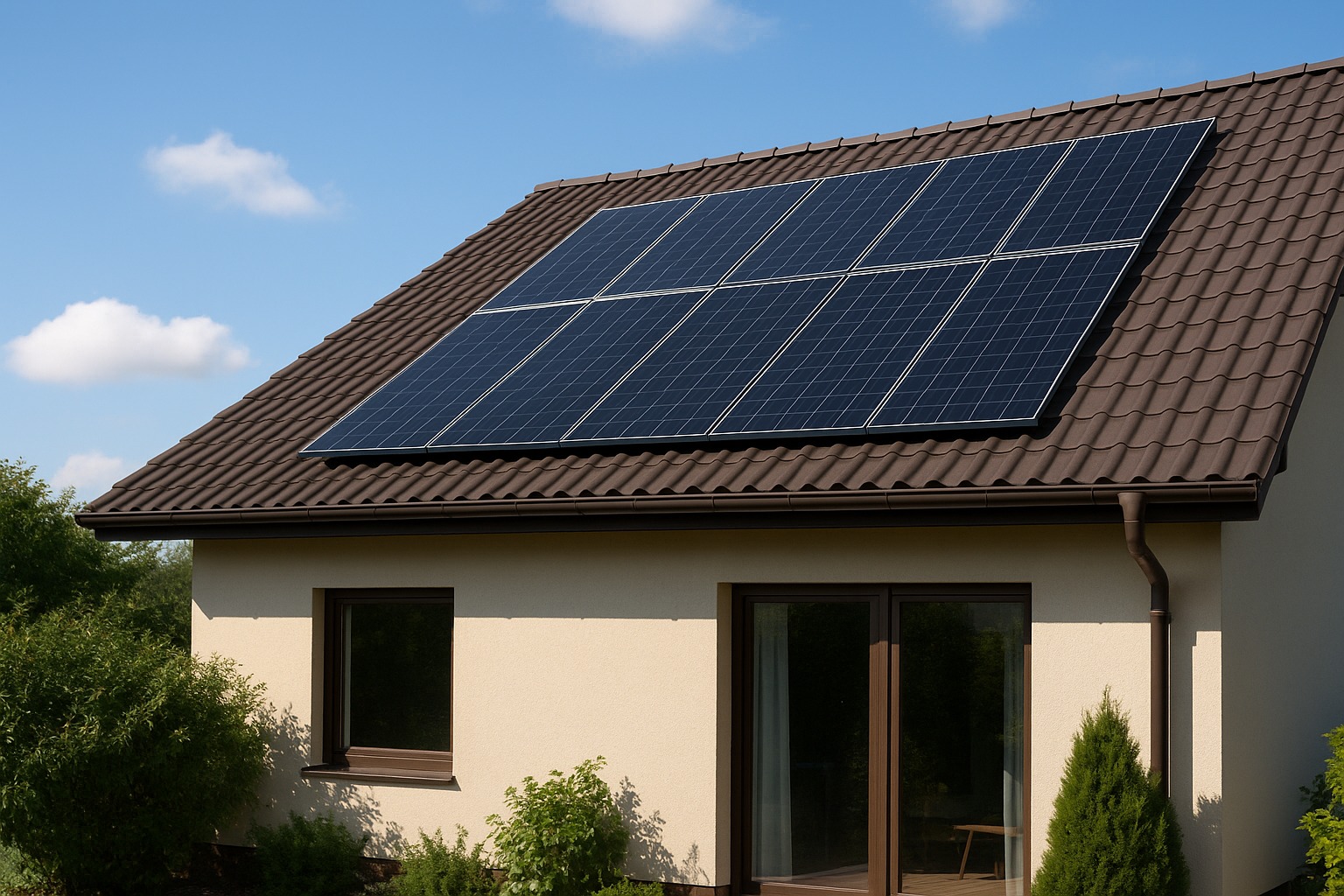
A solar panel only proves its worth through the power it delivers. A 100-watt solar panel gives you enough for a lamp and a phone charger.
A model with 400 watts keeps your lights on and your fridge humming. Step into the higher range, and you are talking about running full rooms, entertainment systems, or even heavy appliances without a hitch.
Every watt level draws a hard line between what you can run and what you cannot.
In the sections ahead, we will break down each popular size, separate fact from hype, and show you exactly what kind of muscle every panel brings to your home.
What Can You Power With a 100 Watt Solar Panel at Home?
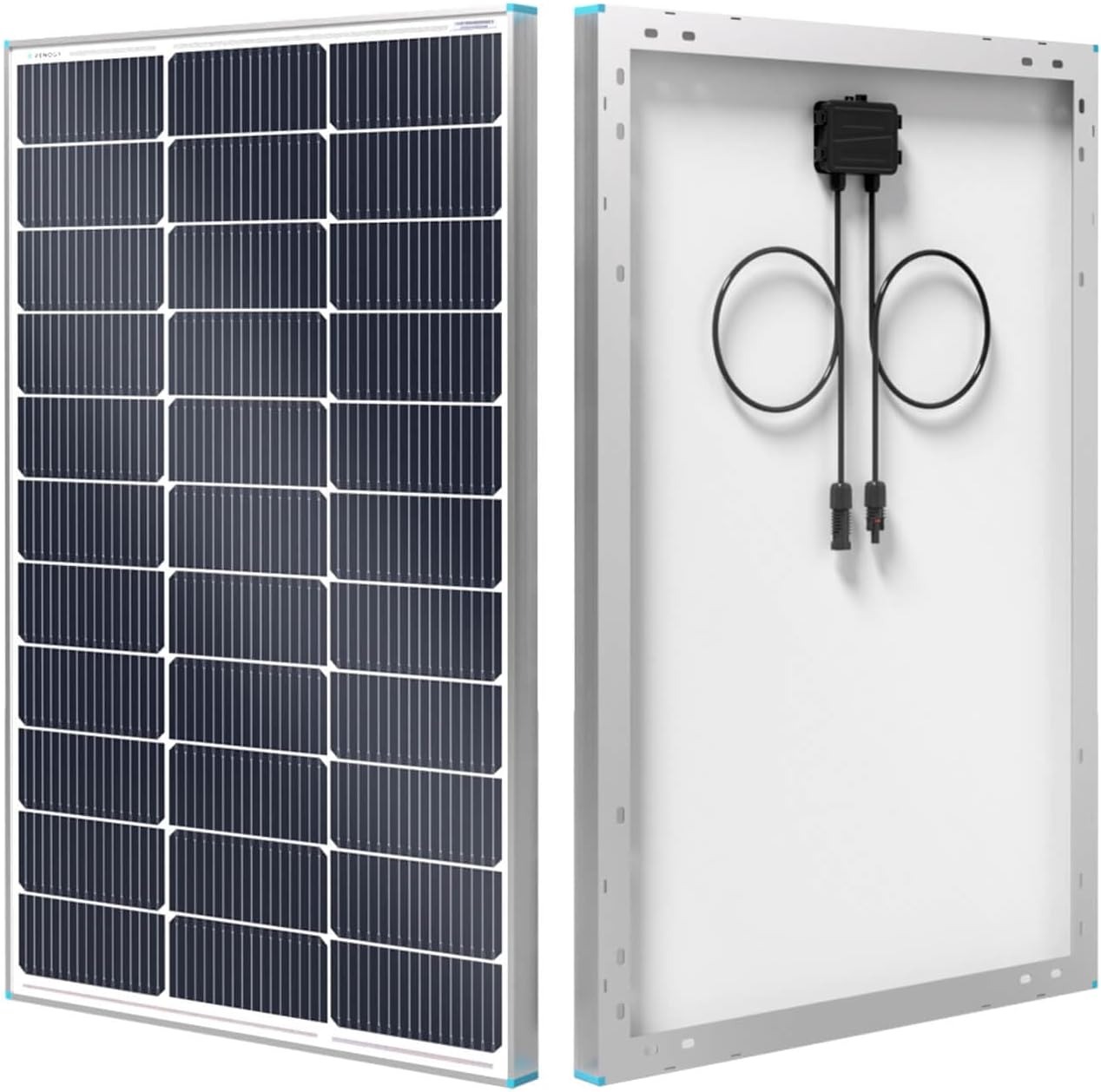
A 100-watt solar panel is one of the smallest options you can install.
It works well for cabins, RVs, small backup systems, or for people who want to power light loads without going into a full system.
Its strength lies in simplicity, but the limits are clear. A single 100W panel on a sunny day will generate about 300-500 watt-hours per day, depending on location and season.
That is enough for a few small devices, not for a whole household.
How Much Energy Does a 100W Panel Produce?
- In ideal sun: about 100 watts per hour
- Over 5 hours of good sunlight: 500 watt-hours per day
- In cloudy or partial shade: production drops sharply, closer to 200-300 watt-hours
Devices You Can Run With a 100W Solar Panel
| Device / Appliance | Power Consumption (W) | Run Time Possible with 500 Wh (daily) | Notes |
|---|---|---|---|
| LED light bulb (10W) | 10W | ~50 hours | Several bulbs possible |
| Smartphone charger | 5W | 100 full charges | Lightest load |
| Laptop | 60W | ~8 hours | Good for daily use |
| Wi-Fi Router | 15W | ~33 hours | Runs day and night |
| Small fan | 40W | ~12 hours | Summer use |
| Portable speaker/radio | 10W | ~50 hours | Leisure |
| Mini LED TV (32″) | 50W | ~10 hours | Short viewing time |
| Small camping fridge (40W avg) | 40W | ~12 hours | Only with battery support |
What You Cannot Expect From 100W
- No power for microwave ovens, kettles, or heaters
- Not enough for large fridges or washing machines
- Cannot sustain multiple heavy appliances at the same time
When a 100W Panel Makes Sense
- For camping, RVs, and off-grid weekends
- For emergency backup lights and chargers
- For hobby projects or learning about solar basics
Everyday Devices You Can Run on a 200 Watt Solar Panel
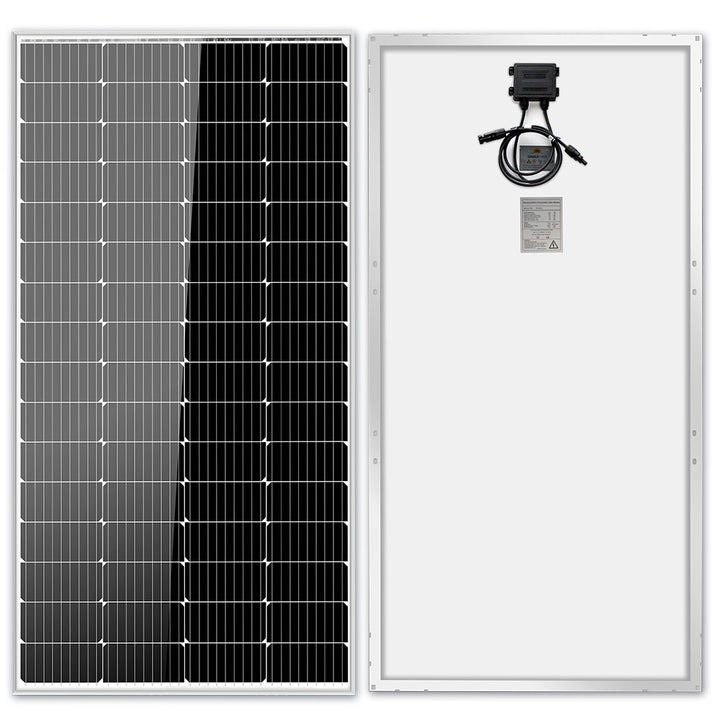
A 200-watt solar panel doubles the output of the 100W unit and starts to feel more practical for daily home use.
On a good sunny day, it can deliver about 600-1,000 watt-hours, depending on conditions.
That makes it suitable for more than basic charging, giving you enough energy to cover multiple devices throughout the day.
Average Daily Output of a 200W Panel
- Strong sun: about 1,000 Wh per day
- Moderate sun: around 700 Wh per day
- Weak sun: closer to 500 Wh per day
Devices You Can Keep Running on 200W
A single 200W panel paired with a small battery can comfortably run several light to medium appliances.
| Device / Appliance | Power Consumption (W) | Run Time Possible with 1,000 Wh (daily) | Notes |
|---|---|---|---|
| LED light bulb (10W) | 10W | ~100 hours | Runs many bulbs easily |
| Smartphone charger (5W) | 5W | 200 charges | No problem at all |
| Laptop | 60W | ~16 hours | Suitable for work |
| Wi-Fi Router | 15W | ~66 hours | Continuous connectivity |
| Small fan | 40W | ~25 hours | Enough for day use |
| Mini TV (32″) | 50W | ~20 hours | Evening viewing covered |
| Small fridge (100W average cycling) | 100W | ~8-10 hours | Works if used sparingly |
| Blender or small kitchen device | 150W | ~5-6 hours | Occasional short use |
Practical Applications for a 200W Solar Panel
- Running multiple lights, fans, and electronics at once
- Keeping a mini fridge going with battery storage
- Powering entertainment systems like TVs and speakers
- Supporting remote work setups with routers, laptops, and lights
Limits to Keep in Mind
A 200W panel still cannot handle power-hungry appliances such as full-sized refrigerators, microwaves, air conditioners, or water heaters.
It is a step up from camping use, but still best for partial home coverage or smaller spaces.
How Much Energy Can a 250 Watt Solar Panel Produce for Household Use?
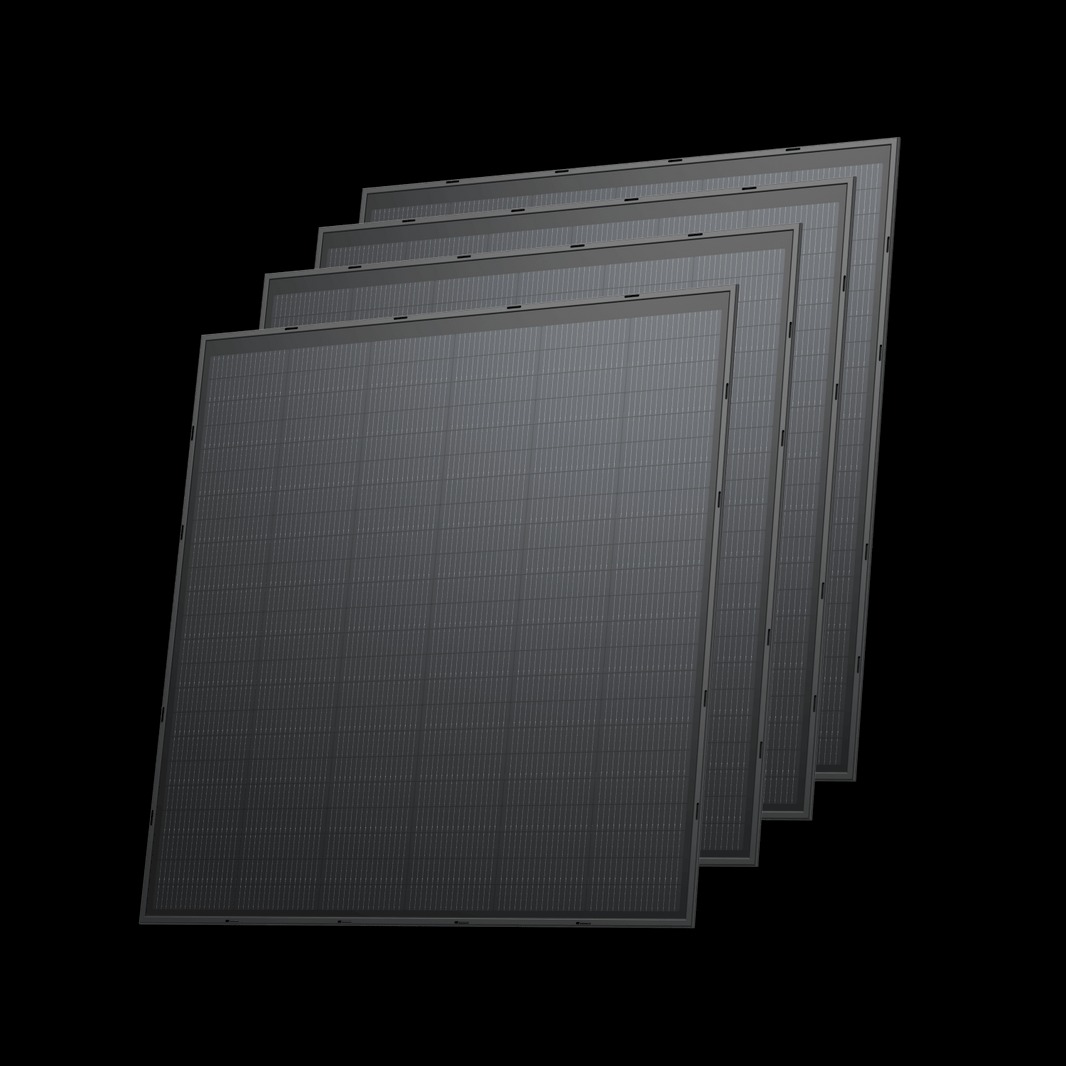
A 250-watt solar panel was once the standard size for residential rooftops. Many homes installed in the last decade still rely on panels in this range.
On average, one unit delivers about 900-1,200 watt-hours per day, depending on sunlight conditions.
That production is enough to cover a wider mix of daily needs compared to smaller panels, but it still comes with clear limits.
Daily Energy Production of a 250W Panel
- Full sun (5 hours peak): 1,250 Wh
- Moderate sun (3-4 hours): 750-1,000 Wh
- Low light or winter: 500-700 Wh
What a 250W Panel Can Actually Handle
| Device / Appliance | Power Consumption (W) | Run Time Possible with 1,000 Wh (daily) | Notes |
|---|---|---|---|
| LED light bulb (10W) | 10W | ~100 hours | Enough for the whole evening lighting |
| Laptop | 60W | ~16 hours | Covers full workday with breaks |
| Wi-Fi Router | 15W | ~66 hours | Always on |
| Small fan | 40W | ~25 hours | Can run multiple fans |
| Flat-screen TV (60W) | 60W | ~16 hours | Evening use possible |
| Mini fridge (100W cycling) | 100W | ~8-10 hours | Works with energy-efficient models |
| Blender or kitchen appliance (200W) | 200W | ~4-5 hours | Short bursts of use |
Everyday Value of a 250W Panel
- Strong fit for small apartments, cabins, or partial home coverage
- Can maintain lights, internet, and key electronics without strain
- Offers more flexibility than 200W but still falls short for full-sized kitchen or laundry appliances
Where It Falls Short
- Cannot run high-consumption devices like air conditioners, heaters, microwaves, or washing machines
- Limited to covering essentials rather than entire rooms full of heavy appliances
What Appliances Are Suitable for a 300 Watt Solar Panel System?

A 300-watt solar panel marks the point where residential solar starts to feel practical for everyday home use.
It produces around 1,000-1,500 watt-hours per day in good conditions, enough to support multiple devices and even a few small appliances at once.
Many rooftop systems still use 300W modules because of their balance between size, cost, and output.
Average Energy Production of a 300W Panel
- Strong sun (5 hours peak): 1,500 Wh
- Moderate sun (3-4 hours): 1,000-1,200 Wh
- Weak sun or winter: 700-900 Wh
What a 300W Panel Can Actually Handle
| Appliance / Device | Power Consumption (W) | Run Time Possible with 1,500 Wh (daily) | Notes |
|---|---|---|---|
| LED light bulb (10W) | 10W | ~150 hours | Easily runs the entire house lighting |
| Laptop | 60W | ~25 hours | Perfect for remote work setups |
| Wi-Fi Router | 15W | ~100 hours | Continuous use all day |
| Flat-screen TV (60W-80W) | 60-80W | ~18-25 hours | More than enough for daily viewing |
| Mini fridge (100W cycling) | 100W | ~12-15 hours | Runs comfortably with battery storage |
| Small kitchen appliance (200W) | 200W | ~7-8 hours | Short use, good for blenders/toasters |
| Gaming console + TV (180W combined) | 180W | ~8 hours | Supports evening entertainment |
Everyday Value of a 300W Solar Panel
- Can run multiple household electronics without juggling usage
- Supports entertainment systems, internet, and lighting together
- Capable of powering a small fridge or multiple small appliances daily
Limits of a 300W Solar Panel
- Still cannot cover heavy appliances such as air conditioners, full-size refrigerators, or laundry machines
- Works best as part of a small multi-panel system rather than standing alone
Can a 350 Watt Solar Panel Handle Kitchen and Living Room Needs?
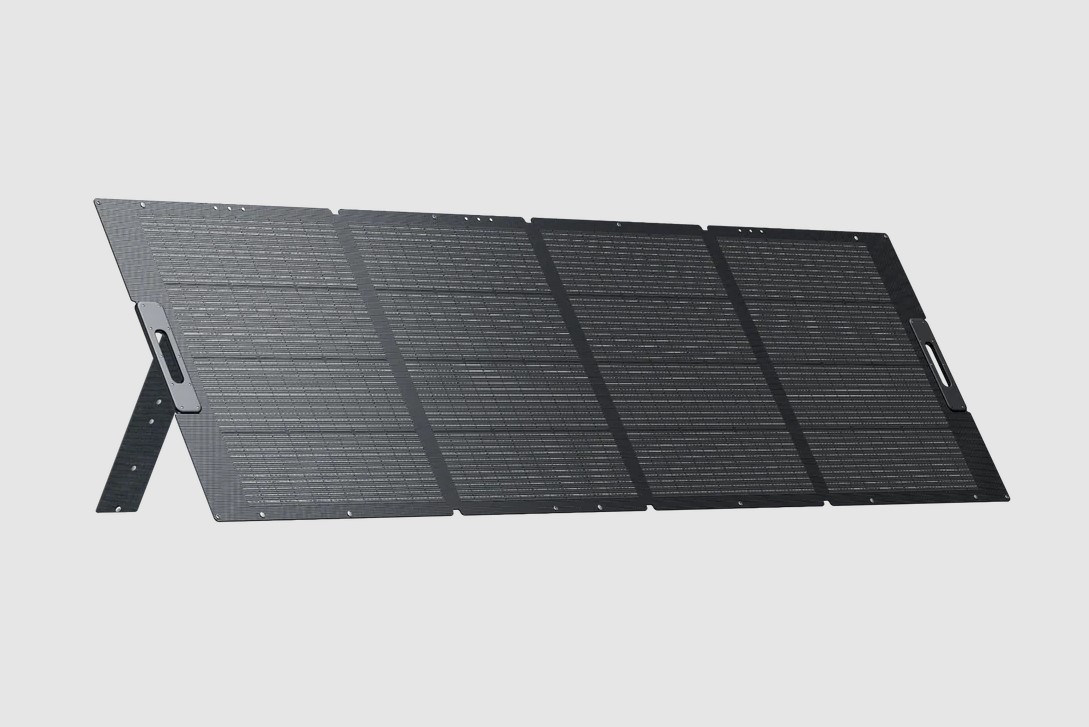
A 350-watt solar panel sits in the mid-range of modern home installations.
It generates about 1,200-1,750 watt-hours per day in good sunlight, which gives you more flexibility than smaller units.
At this level, you can begin to cover both living room entertainment and light kitchen use without constantly worrying about overloading the system.
Average Daily Output of a 350W Panel
- Full sun (5 hours): 1,750 Wh
- Moderate sun (3-4 hours): 1,200-1,400 Wh
- Cloudy or winter days: 800-1,000 Wh
What a 350W Panel Can Actually Handle?
| Appliance / Device | Power Consumption (W) | Run Time Possible with 1,750 Wh (daily) | Notes |
|---|---|---|---|
| LED light bulbs (10W each) | 10W | ~175 hours total | Enough to light entire home |
| Laptop + Wi-Fi router (75W combined) | 75W | ~23 hours | Great for work setups |
| Flat-screen TV (80W) | 80W | ~21 hours | Continuous evening use |
| Mini fridge (100W cycling) | 100W | ~14-16 hours | Reliable with a battery |
| Microwave (700W short bursts) | 700W | ~2 hours total | Works for quick reheats |
| Blender or coffee maker (300W) | 300W | ~5 hours | Good for kitchen prep |
| Small fan or air purifier (50W) | 50W | ~35 hours | Comfort devices supported |
Everyday Value of a 350W Solar Panel
- Strong enough to run the living room electronics all evening
- Can support both lights and a small kitchen appliance on the same day
- Starts to feel like a reliable part of household energy rather than a backup
Where 350W Still Falls Short
- Cannot handle large fridges, air conditioners, or washing machines
- Works best with battery storage to smooth out cooking or evening power spikes
What Can I Run With a 400 Watt Solar Panel in a Typical House?
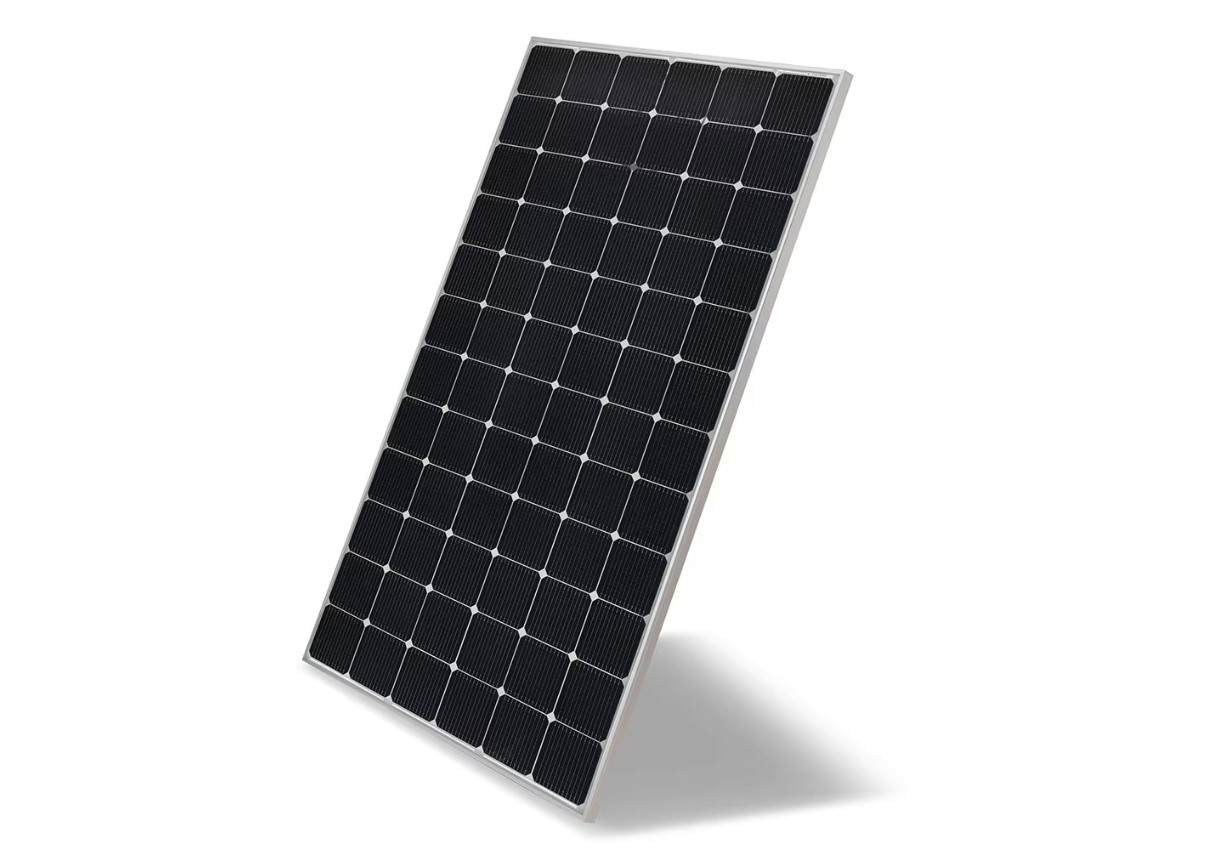
A 400-watt solar panel is now the standard choice for many new rooftop systems.
It provides 1,500-2,000 watt-hours per day under good sunlight, making it strong enough to cover essentials and some medium appliances.
With multiple 400W panels linked together, a full household can be powered, but even a single unit is far more practical than older 250W or 300W panels.
Daily Energy Production of a 400W Panel
- Strong sun (5 hours peak): 2,000 Wh
- Moderate sun (3-4 hours): 1,400-1,600 Wh
- Cloudy or winter: 1,000-1,200 Wh
What a 400W Panel Can Actually Handle
| Appliance / Device | Power Consumption (W) | Run Time Possible with 2,000 Wh (daily) | Notes |
|---|---|---|---|
| LED lighting (10 bulbs at 10W each) | 100W total | ~20 hours | Lights covered easily |
| Laptop + Wi-Fi router + phone charging | 100W | ~20 hours | All-day work setup |
| 40-50 inch flat-screen TV (100W) | 100W | ~20 hours | Great for family viewing |
| Mini fridge or efficient fridge (120W) | 120W cycling | ~15 hours | Reliable daily use |
| Microwave oven (700W bursts) | 700W | ~2.5 hours | Short cooking sessions |
| Blender or coffee maker (300W-400W) | 300-400W | ~5 hours | Regular kitchen use |
| Game console + TV (180W combined) | 180W | ~11 hours | Evening entertainment |
| Small washing machine (500W light load) | 500W | ~4 hours | Possible with battery storage |
Everyday Value of a 400W Solar Panel
- Powers all lights, work devices, and entertainment with no stress
- Can handle small kitchen appliances daily without draining storage
- Offers independence for key home activities like refrigeration, cooking, and communication
Where the 400W Panel Reaches Its Limit
- Cannot handle large appliances like ovens, dryers, or central air conditioning
- Needs to be part of a system with multiple panels for full household coverage
How Much Power Output Do You Get From a 450 Watt Solar Panel?
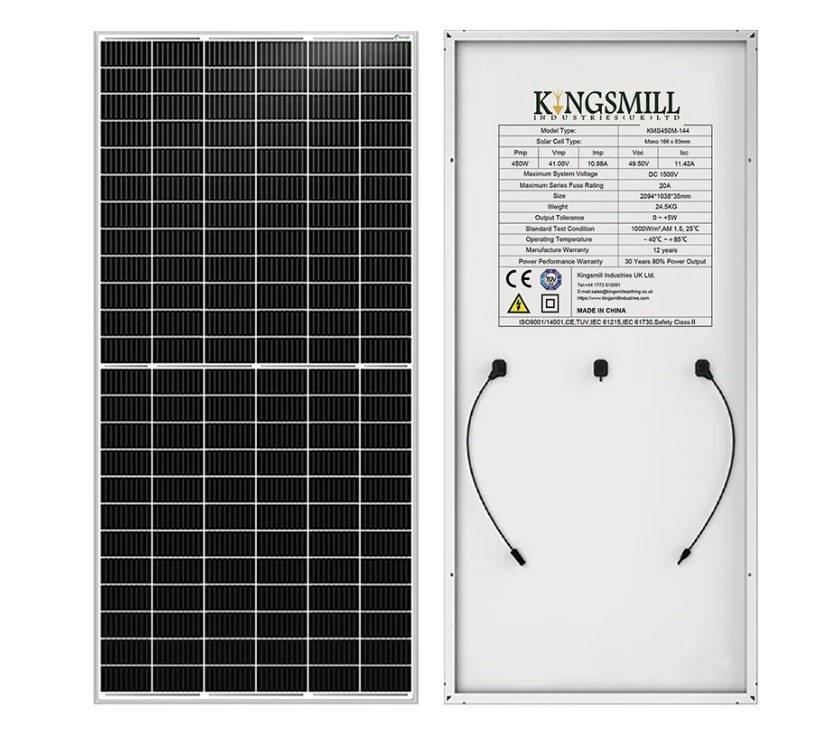
A 450-watt solar panel edges past the 400W standard and represents one of the newer high-output options available for home rooftops.
One panel of this size can generate about 1,700-2,300 watt-hours per day, giving extra flexibility for heavier daily use.
Many homeowners choose 450W modules when they want fewer panels on the roof but still need more total power.
Daily Energy Production of a 450W Panel
- Strong sun (5 hours): 2,250 Wh
- Moderate sun (3-4 hours): 1,600-1,900 Wh
- Cloudy or winter days: 1,200-1,400 Wh
What a 450W Panel Can Actually Handle
| Appliance / Device | Power Consumption (W) | Run Time Possible with 2,250 Wh (daily) | Notes |
|---|---|---|---|
| Full LED home lighting (10-15 bulbs, 10W ea) | 100-150W | ~15-20 hours | Whole evening lighting |
| Laptop + Wi-Fi router + phone charging | 100W | ~22 hours | Complete daily coverage |
| Flat-screen TV (120W) | 120W | ~18 hours | Perfect for long use |
| Small refrigerator (150W average cycling) | 150W | ~13-15 hours | Strong enough for reliable cooling |
| Microwave oven (700W bursts) | 700W | ~3 hours | Short cooking tasks possible |
| Blender, coffee maker, toaster (300-500W) | 300-500W | ~4-7 hours | Kitchen convenience covered |
| Washing machine light load (500W) | 500W | ~4.5 hours | Works if timed with storage |
| Gaming console + TV (200W combined) | 200W | ~11 hours | All-day entertainment setup |
Benefits of Moving to 450W
- Reduces the number of panels needed for a full system
- Covers more appliances without constant energy budgeting
- Ideal for mid-sized households that want fewer roof installations
Where 450W Still Reaches Its Limit
- Cannot handle continuous heavy loads like dryers or central AC
- Works best with battery storage and multiple panels for consistent whole-home coverage
What a 500 Watt Solar Panel Really Delivers Day to Day?
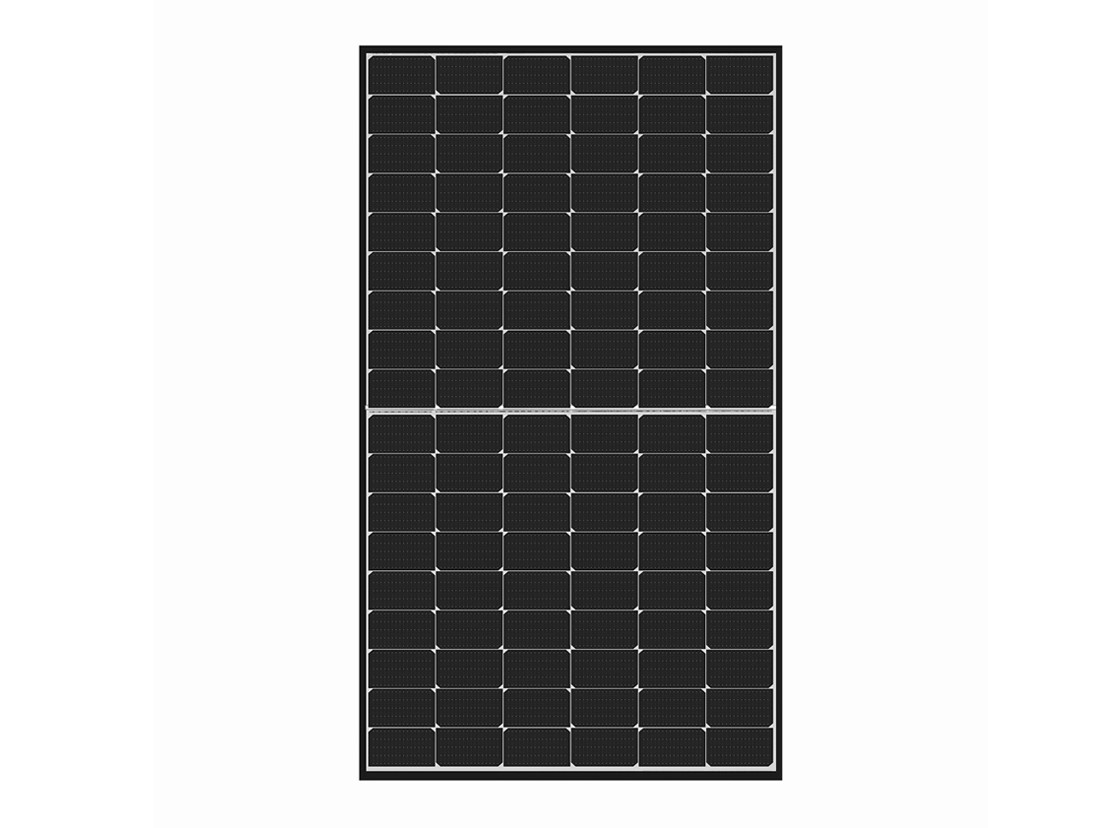
A 500-watt solar panel represents one of the most powerful single panels commonly available for residential rooftops.
It can produce about 2,000-2,800 watt-hours per day, depending on location and sun exposure.
At this level, you can comfortably cover most daily electronics and several kitchen or household appliances.
Many modern premium systems now use 500W panels because they provide high output without requiring too many units on the roof.
Daily Energy Production of a 500W Panel
- Strong sun (5 hours): 2,500 Wh
- Moderate sun (3-4 hours): 1,800-2,200 Wh
- Cloudy or winter days: 1,300-1,600 Wh
What Can You Run With a 500W Panel?
| Appliance / Device | Power Consumption (W) | Run Time Possible with 2,500 Wh (daily) | Notes |
|---|---|---|---|
| Full LED household lighting (15-20 bulbs) | 150-200W | ~12-16 hours | Covers the whole house lighting easily |
| Laptop, router, phone charging combo | 100W | ~25 hours | No problem with work and communication |
| Flat-screen TV (120W) | 120W | ~20 hours | Long viewing sessions are supported |
| Refrigerator (150-200W cycling) | 150-200W | ~12-15 hours | Reliable daily operation |
| Microwave oven (700W bursts) | 700W | ~3.5 hours | Practical for regular cooking |
| Coffee maker or toaster (400-500W) | 400-500W | ~5-6 hours | Kitchen ready |
| Washing machine (500W average) | 500W | ~5 hours | Works for light laundry loads |
| Gaming console + TV (200W combined) | 200W | ~12 hours | Perfect for entertainment |
| Small portable AC (500-600W) | 500-600W | ~4-5 hours | Cooling is possible with battery support |
Everyday Value of a 500W Solar Panel
- Supports both kitchen and living room use in a single day
- Delivers enough power for key appliances plus entertainment
- Reduces panel count for households aiming for higher daily production
Where the 500W Panel Still Stops Short
- Cannot independently run large ovens, central AC, or dryers
- Works best in a system with multiple panels and storage for heavy household coverage
What Can You Power With a 550 Watt Solar Panel at Home?
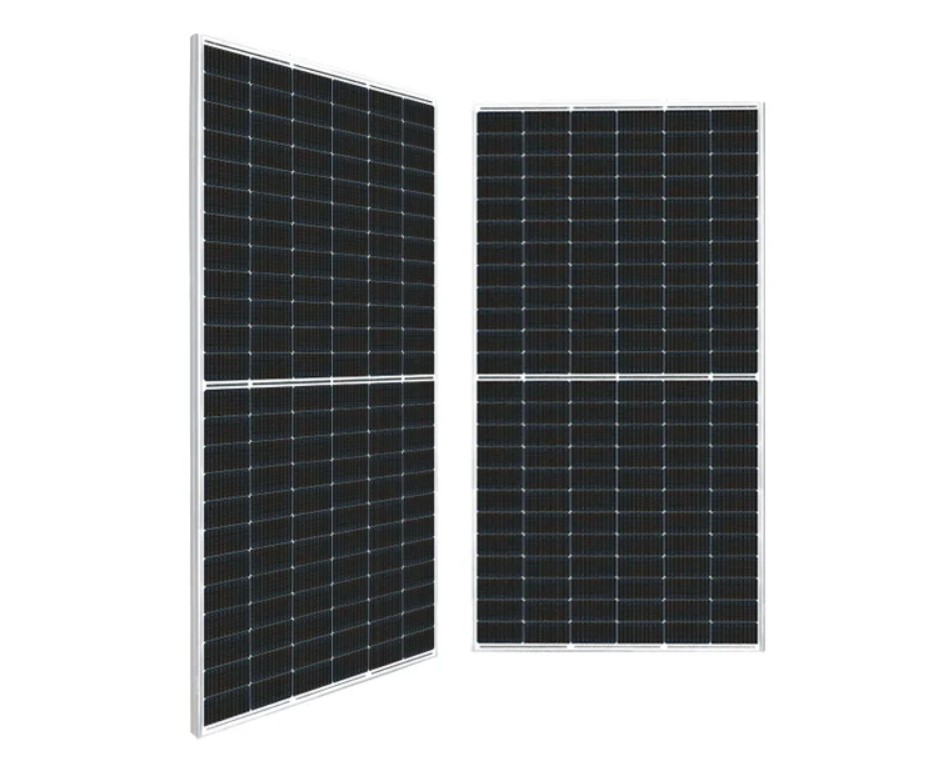
A 550-watt solar panel pushes into high-performance territory.
It delivers about 2,200-3,000 watt-hours per day in good sunlight, which makes it suitable for bigger households or anyone who wants fewer panels on the roof but more power per unit.
At this level, you can run several electronics and multiple kitchen appliances daily, and even cover some heavier loads that smaller panels cannot handle.
Daily Energy Production of a 550W Panel
- Strong sun (5 hours): 2,750 Wh
- Moderate sun (3-4 hours): 2,000-2,300 Wh
- Cloudy or winter days: 1,500-1,800 Wh
What a 550W Panel Can Actually Handle?
| Appliance / Device | Power Consumption (W) | Run Time Possible with 2,750 Wh (daily) | Notes |
|---|---|---|---|
| Full LED home lighting (20 bulbs, 10W ea) | 200W | ~13-14 hours | Bright full-house lighting |
| Laptop, router, phone charging combo | 100W | ~27 hours | Perfect for constant work use |
| Flat-screen TV (120W) | 120W | ~22 hours | Daily viewing without stress |
| Refrigerator (200W cycling) | 200W | ~13-14 hours | Covers family-sized fridges |
| Microwave oven (700W bursts) | 700W | ~3.5 hours | Useful for daily cooking |
| Coffee maker or toaster (500W) | 500W | ~5.5 hours | Kitchen convenience assured |
| Washing machine (500-600W per cycle) | 500-600W | ~4-5 hours | Light laundry loads possible |
| Portable AC or heater (600W-700W) | 600-700W | ~3-4 hours | Comfort devices supported |
| Gaming console + TV (200W combined) | 200W | ~13 hours | Entertainment covered |
Everyday Value of a 550W Solar Panel
- Large enough to power heavy daily appliances like refrigerators and washing machines
- Provides breathing room for entertainment and kitchen use without energy rationing
- Reduces total panel count needed for strong household coverage
Limits of a 550W Solar Panel
- Still falls short of running full-sized electric ovens, dryers, or central air conditioning
- Works best as part of a high-capacity array with multiple panels and storage
What Can a 600 Watt Solar Panel Do for a Modern Family Home?
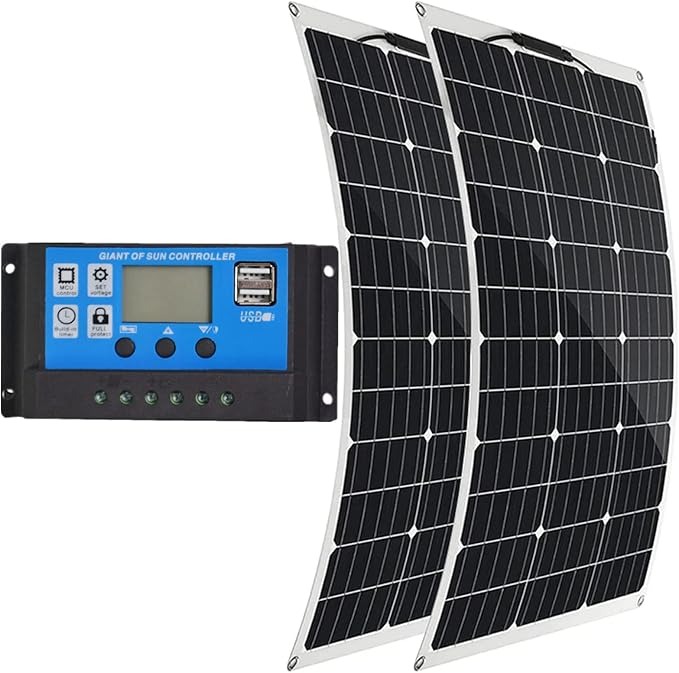
A 600-watt solar panel is one of the most powerful single panels available for residential rooftops today.
It delivers about 2,400-3,600 watt-hours per day, depending on conditions. At this level, you can cover a wide range of household devices, multiple appliances, and even approach near full-room coverage with just one or two panels.
For homeowners with limited roof space, 600W units offer a way to maximize energy without stacking too many panels.
Daily Energy Production of a 600W Panel
- Strong sun (5 hours): 3,000 Wh
- Moderate sun (3-4 hours): 2,200-2,600 Wh
- Cloudy or winter: 1,600-2,000 Wh
What a 600W Panel Can Actually Handle
| Appliance / Device | Power Consumption (W) | Run Time Possible with 3,000 Wh (daily) | Notes |
|---|---|---|---|
| Full LED household lighting (20-25 bulbs) | 200-250W | ~12-15 hours | Entire house lighting covered |
| Laptop, router, phone charging combo | 100W | ~30 hours | More than enough |
| Flat-screen TV (120W) | 120W | ~25 hours | Long sessions possible |
| Refrigerator (200W cycling) | 200W | ~15 hours | Supports full-size models |
| Microwave oven (700W bursts) | 700W | ~4 hours | Covers daily cooking |
| Coffee maker, toaster, blender (500W avg) | 500W | ~6 hours | Multiple kitchen tasks supported |
| Washing machine (500-600W per cycle) | 500-600W | ~5 hours | Practical laundry use |
| Small portable AC or heater (600-800W) | 600-800W | ~3-4 hours | Climate control possible |
| Gaming console + TV (200W combined) | 200W | ~15 hours | Family entertainment ready |
Everyday Value of a 600W Solar Panel
- Strong enough to handle core appliances plus entertainment daily
- Reduces the need for multiple smaller panels, maximizing roof efficiency
- Provides flexibility for kitchens, living rooms, and comfort devices
Where 600W Still Falls Short
- Cannot power electric ovens, dryers, or central AC alone
- Best used as part of a system of several panels with battery storage for complete household independence
What Is the Maximum Size You Can Install on a Rooftop?
Solar panels are no longer limited to the 250W or 300W units that once defined residential setups.
Today, most homes use panels in the 400W to 600W range, with manufacturers now pushing models up to 650W and 700W.
On paper, these large panels sound appealing because each one generates 3,000-4,000 watt-hours per day under strong sunlight.
The challenge comes with size, weight, and roof layout.
A standard 400W panel measures about 65 inches by 40 inches, light enough to handle and flexible enough to arrange around chimneys or vents.
By contrast, a 700W panel can stretch to 85 inches by 45 inches and weigh more than 70 pounds, making installation harder and limiting how many can actually fit on an average roof.
How Many 400W Panels Fit on a Rooftop?
On a suburban home with about 800 square feet of usable roof space, most installers can place 12-16 panels rated at 400W.
That equals 4.8kW to 6.4kW of total system power.
It covers lighting, electronics, refrigeration, and some kitchen use without issue.
How Many 500W Panels Fit on a Rooftop?
Slightly larger 500W panels reduce the count to around 10-14 units.
Total system size ranges from 5kW to 7kW.
You lose a bit of layout flexibility, but the extra output per panel helps boost production.
How Many 600W Panels Fit on a Rooftop?
At 600W, panels are larger and heavier, so installers usually place 8-12 units on the same roof size.
That equals 4.8kW to 7.2kW of capacity.
These panels are efficient, but fitting them neatly on irregular rooftops can be tricky.
Can You Install 650W or 700W Panels?
@sensatintl700w Bi-Facial solar panels work in progress♬ original sound – SenSat
It is possible, but mostly on large, flat rooftops or new builds designed for solar.
In such cases, you can place 7-10 oversized panels for 4.5kW to 7kW capacity.
On average, pitched rooftops, large panels often waste space around obstacles and complicate installation.
That is why most residential systems stop at 600W panels.
FAQs
How many solar panels does it take to run an air conditioner?
A typical window AC unit uses 500-800W, which requires at least 2-3 panels rated at 400W each to run during daylight. A central AC system needs a much larger setup of 15+ panels plus batteries.
Can solar panels run a refrigerator 24/7?
Yes, but only with enough capacity. A modern energy-efficient fridge needs about 150-200W per hour, which means at least two 400W panels and battery storage to keep it powered overnight.
Do I need to replace my roof before installing solar panels?
If your roof is older than 15-20 years, replacement is recommended before installing panels. Solar systems are meant to last 25 years, so roof strength and durability must match that lifespan.
How much roof space do solar panels need?
Each 400W panel takes about 18-21 square feet. An average 6kW system with 15 panels requires 300-350 square feet of usable roof space.
Can solar panels increase my home’s resale value?
Yes. Studies show homes with solar systems sell for over 4% more on average. Buyers value lower electricity bills and long-term energy independence.
The Bottom Line
Solar panels come in many sizes, from small 100W units that power basic devices to large 600W models that keep major appliances running.
Every watt level sets clear limits on what you can and cannot do, which is why choosing the right size matters more than chasing the biggest number.
For most homes, panels in the 400W-600W range strike the best balance between output, roof fit, and cost.
Larger 650W and 700W panels exist, but they are better suited for commercial projects than family rooftops.
The smartest move is to size your system around your daily needs, roof space, and long-term energy goals.
Read Next: $2 Billion Ivanpah Solar Project Abandoned With 2,000,000 Solar Panels Left To Decay

